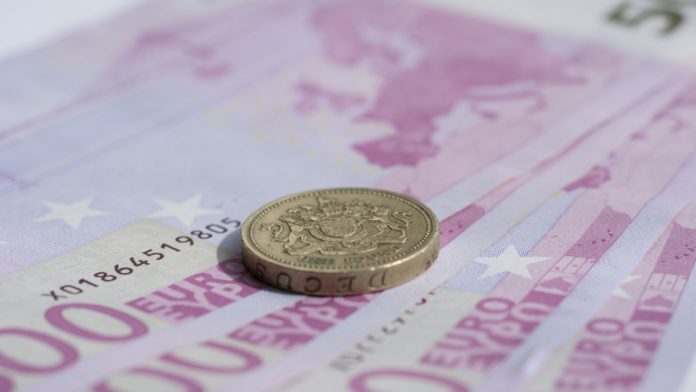- Pound (GBP) rises with BoE speakers in focus
- Today UK services PMI is due
- Euro (EUR) lower amid Russian developments
- Eurozone services PMI due
The Pound Euro (GBP/EUR) exchange rate is rising for a third straight day. The pair settled +0.72% higher on Monday at €1.1949, after trading in a range between €1.1857 – €1.1960. At 05:45 UTC, GBP/EUR trades +0.13% at €1.1874.
The pound gained in the previous session as investors continue to price in a lot more than what the Bank of England is guiding for. The market will continue to focus on BoE speakers as the outlook becomes increasingly more important. Central bankers are very aware that there is a high economic cost of hiking rates, but they also know that action must be taken to rein in high inflation.
Looking ahead attention will shift to the release of the services PMI data, which is expected to show an upward revision to 61, from 60.5. This would be a very encouraging sign for the UK economy where the service sector accounts for 80% of economic activity.
The manufacturing PMI was downwardly revised in March to 55.2, a 13 month low.
The euro came under pressure in the previous session amid fading hopes of a diplomatic solution to the Ukraine crisis and after eurozone investor morale fell to its lowest level Since July 2020. According to Sentix investor confidence index fell to -18 in April down from -7 in March and well below the -9.2 level forecast.
The fall in investors’ sentiment comes as the Russia war continues and sanctions and uncertainty are pushing the Eurozone economy towards recession. The ECB can’t rush to the aid of the economy with a loser monetary policy. Quite the opposite with inflation surging the ECB is adopting a more hawkish stance.
Sentix said that sentiment is dropping globally, but more acutely in the Eurozone.
Looking ahead the services PMI data is due to be released and is expected to slip to 54.8 in March, down from 55.5 in the earlier reading. The level 50 separates expansion from contraction.





